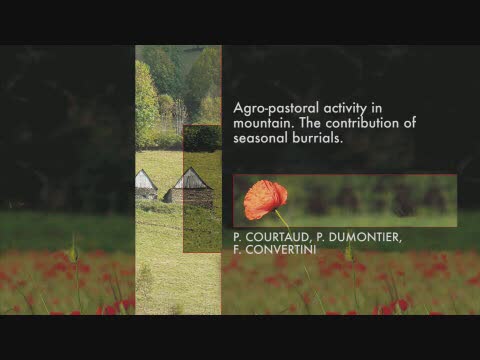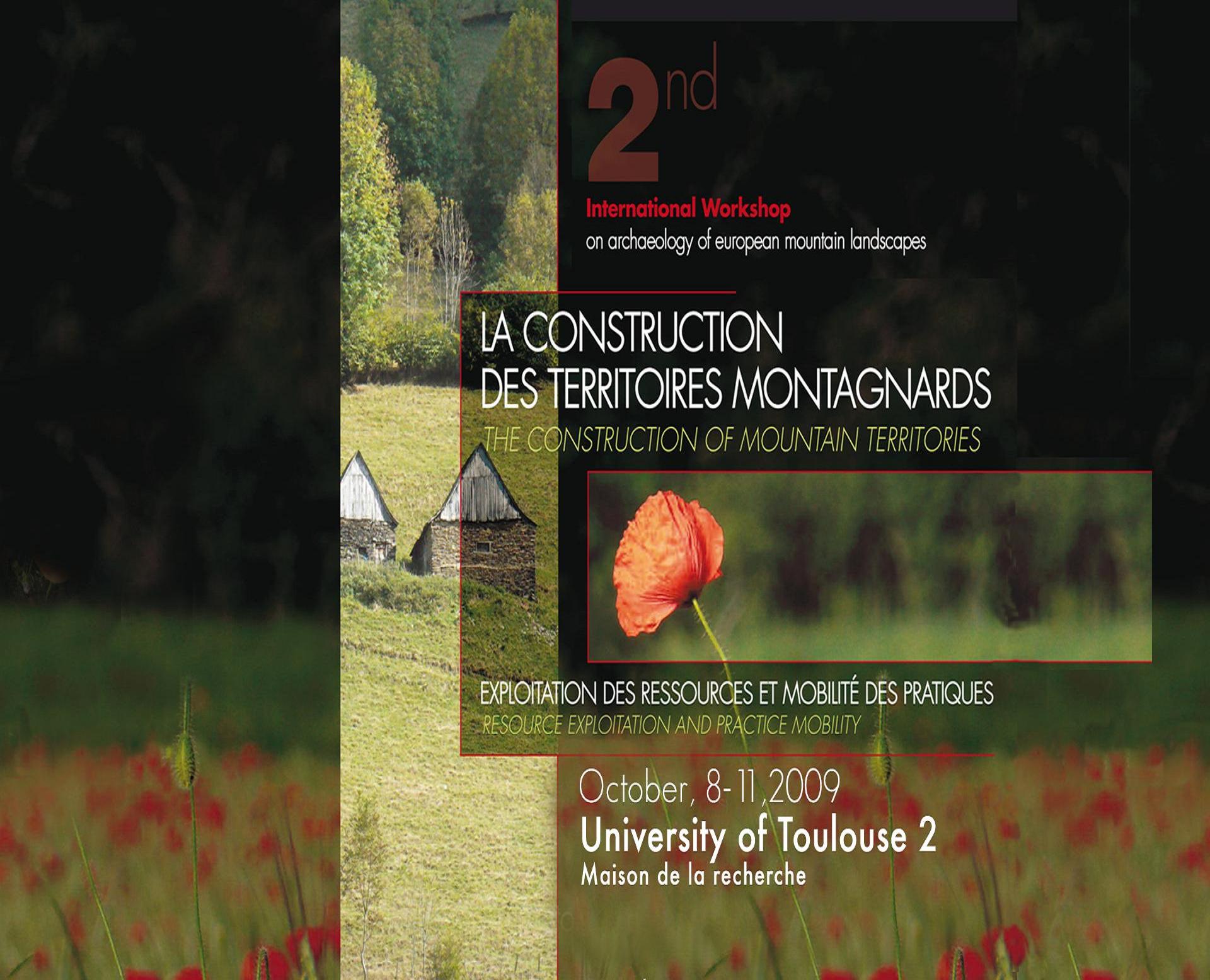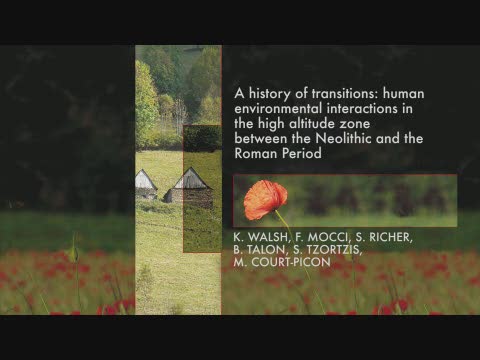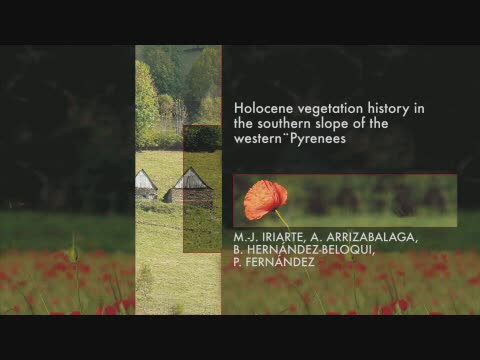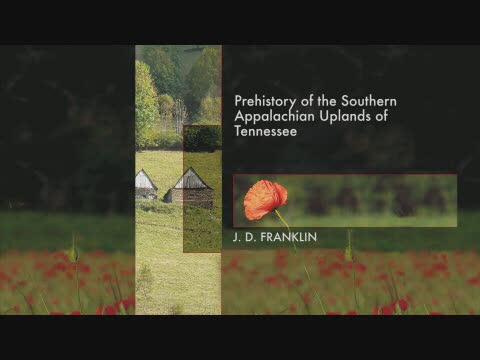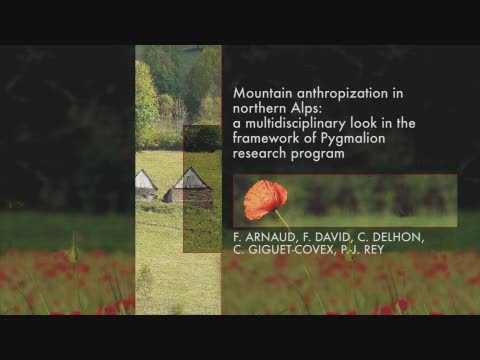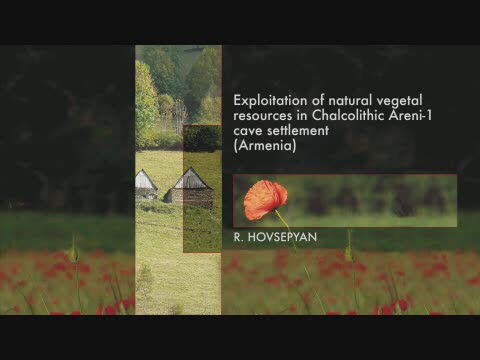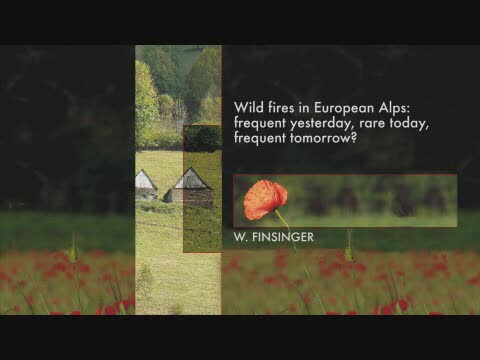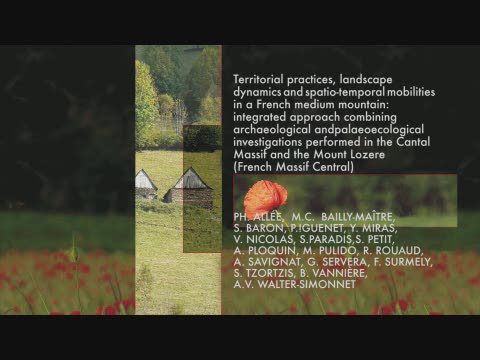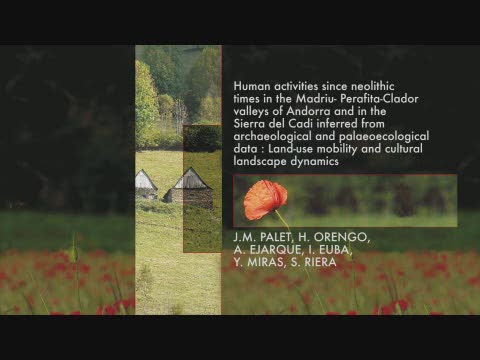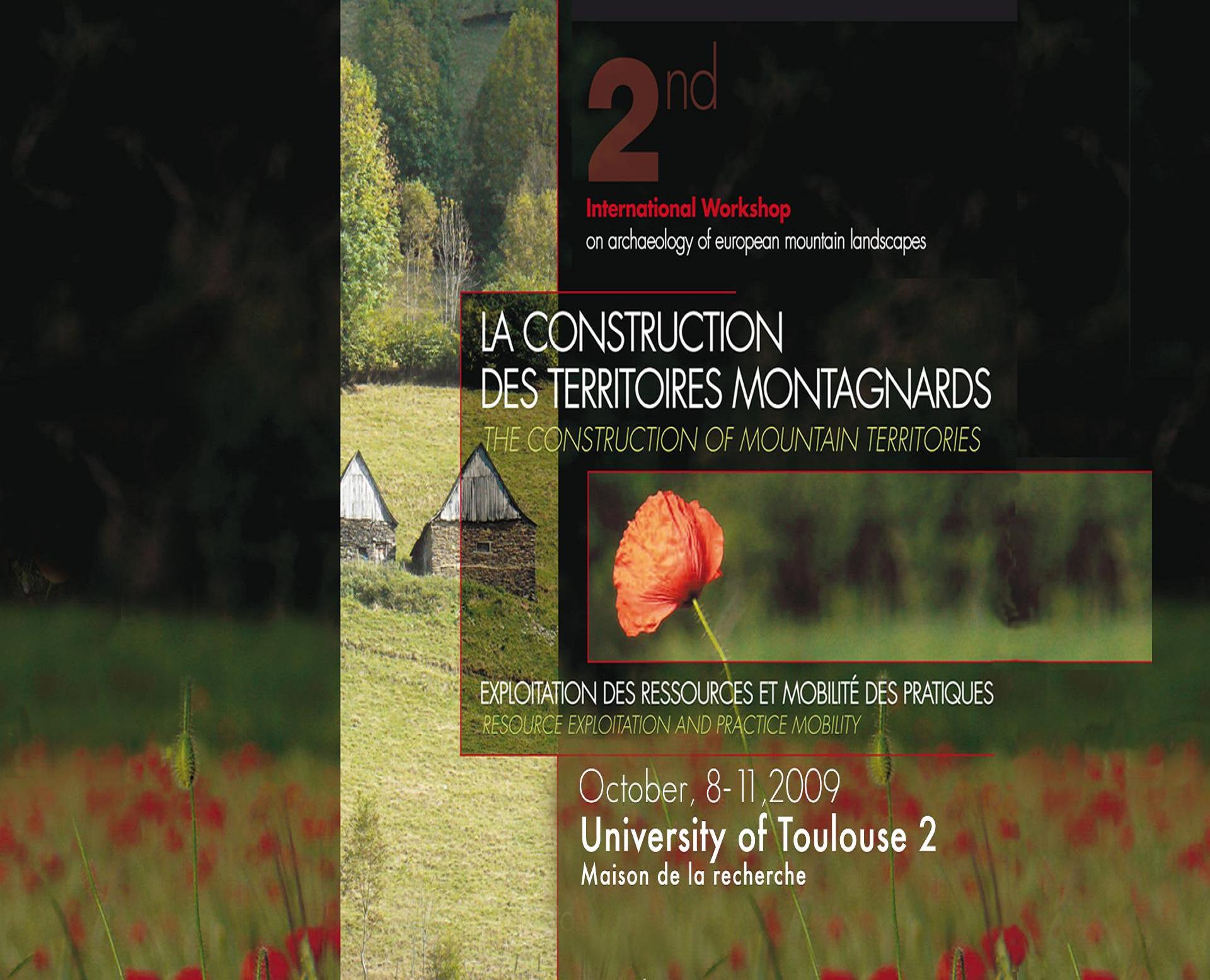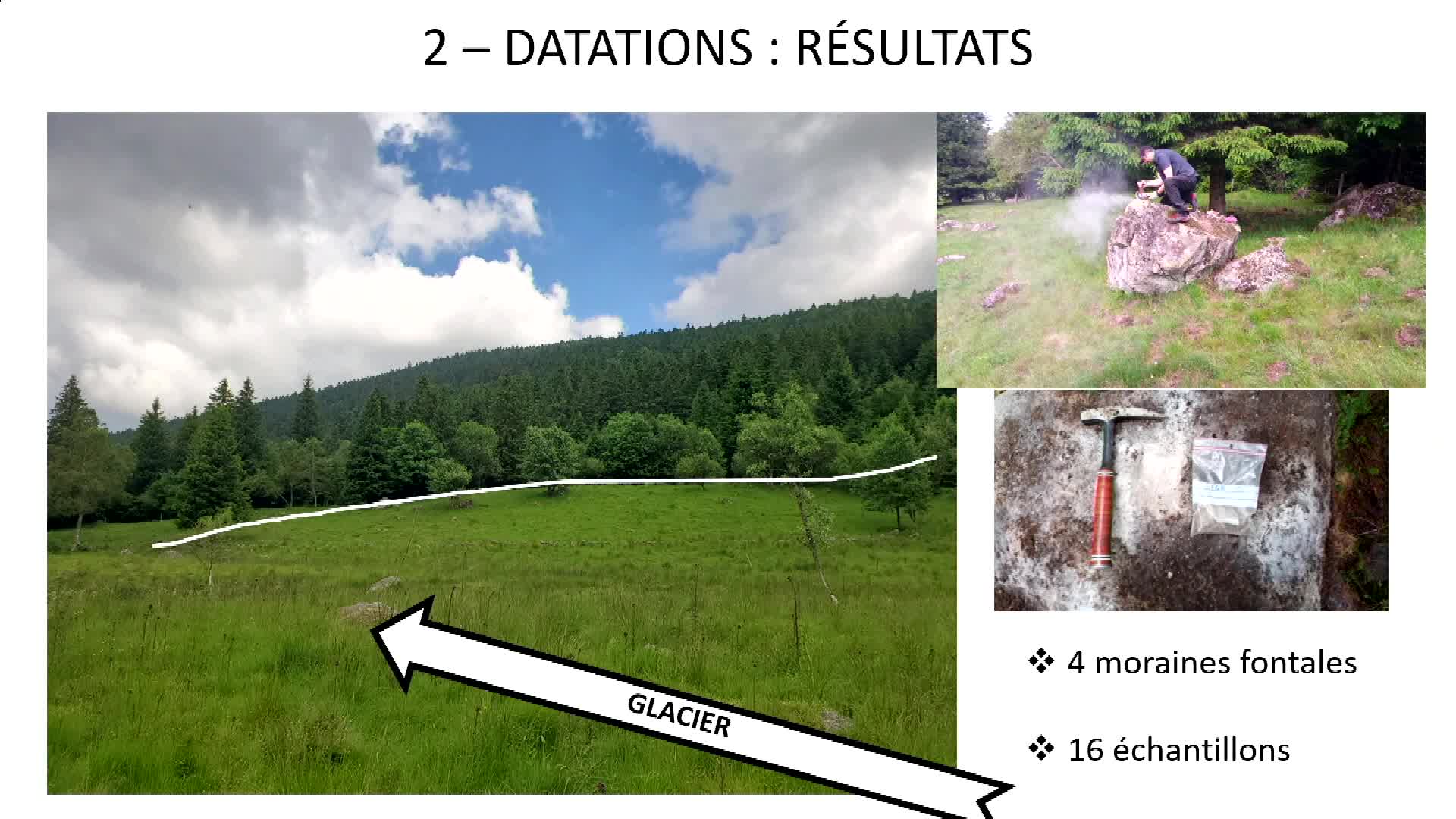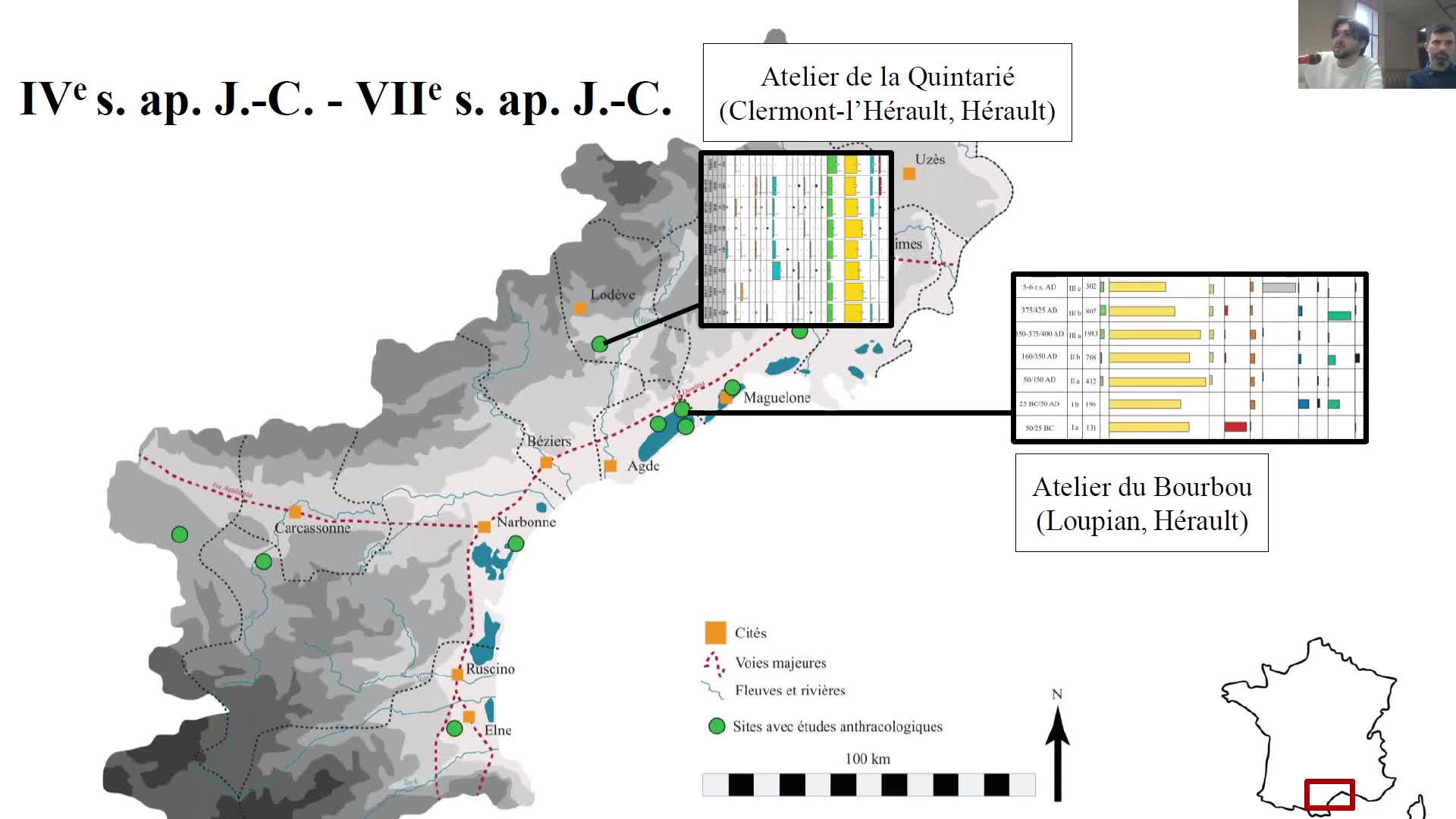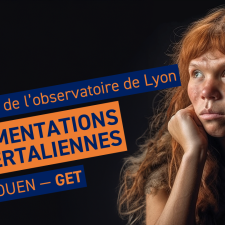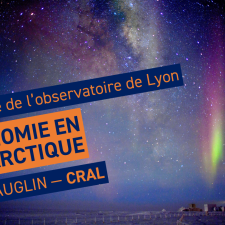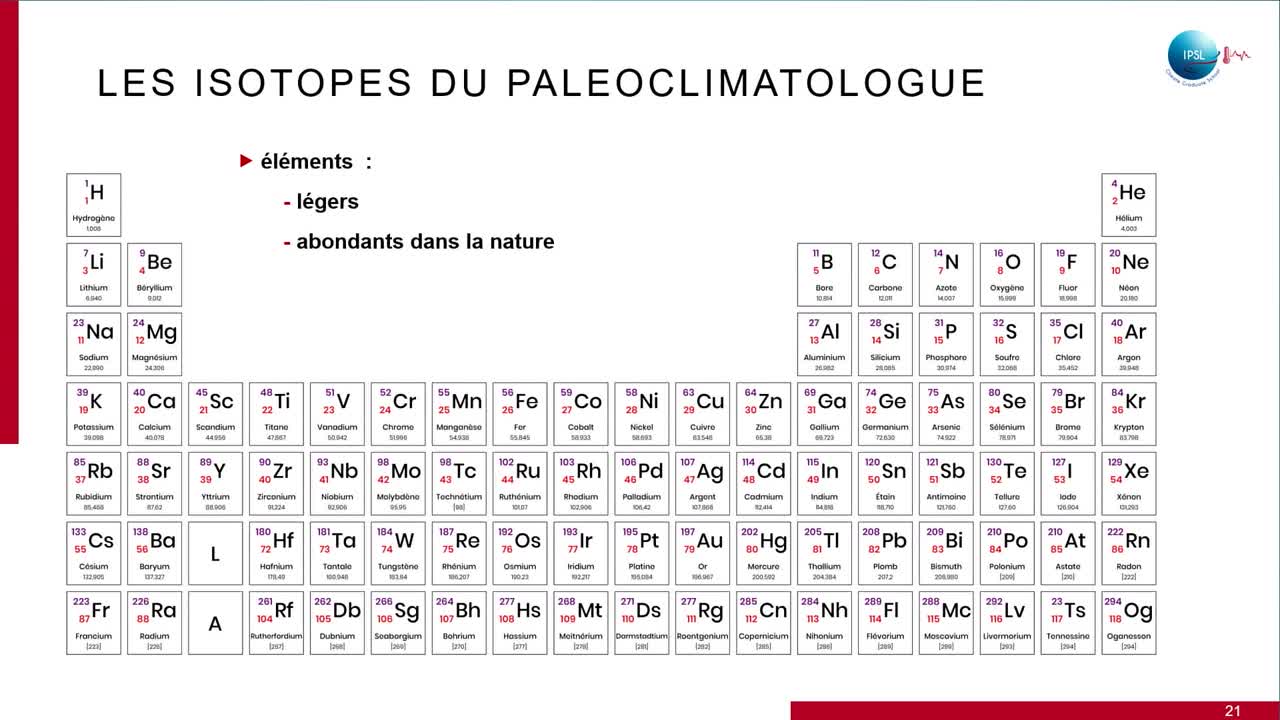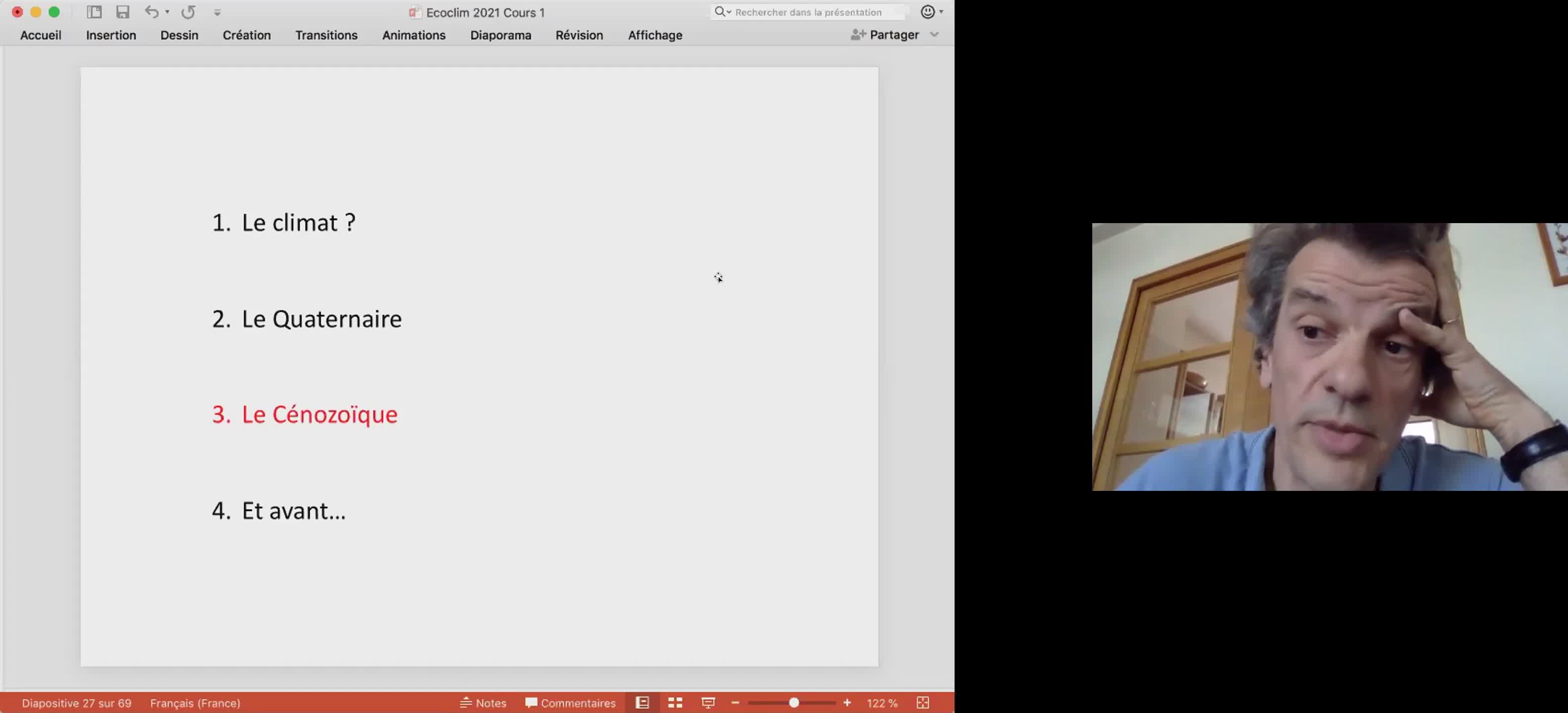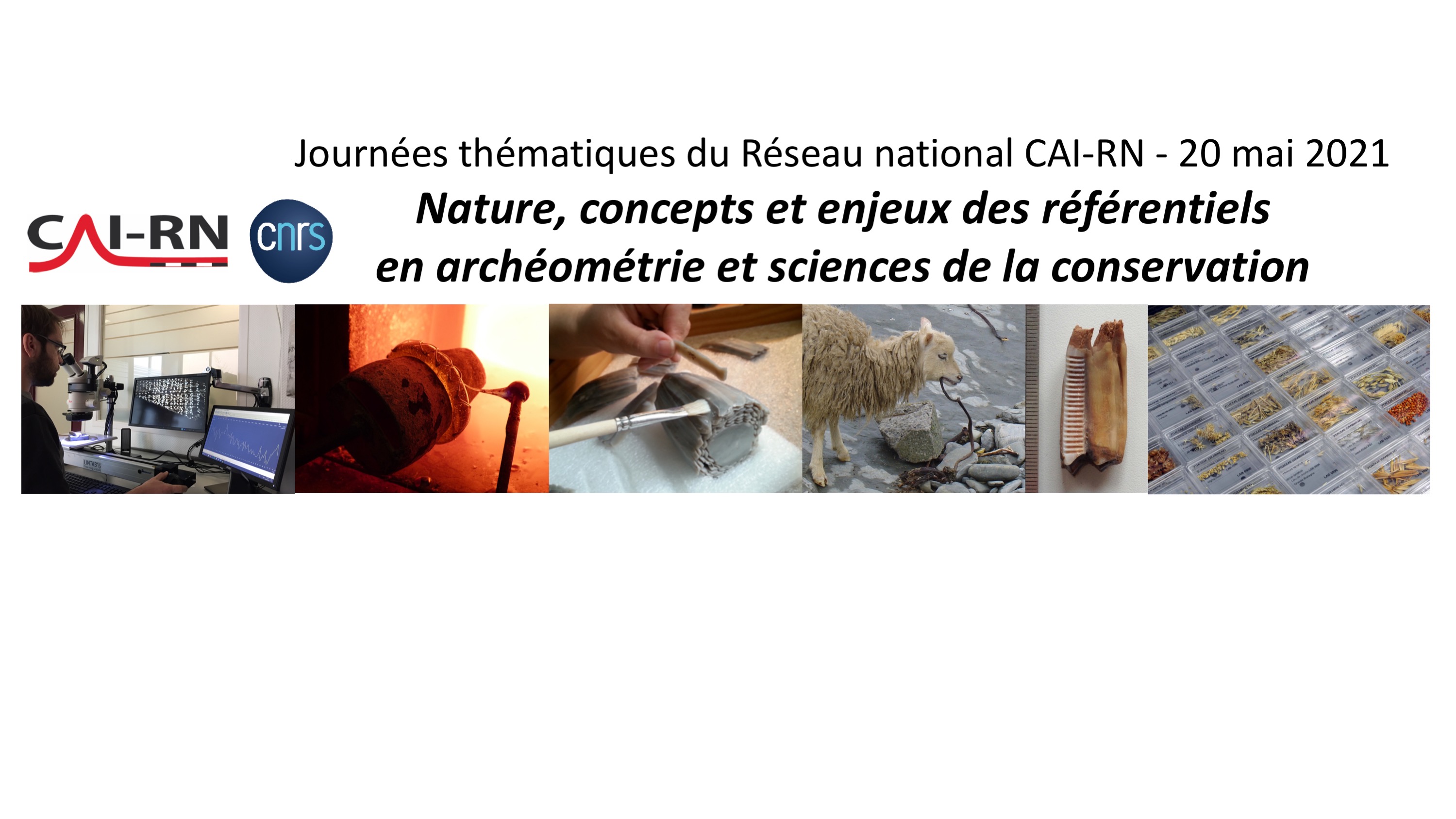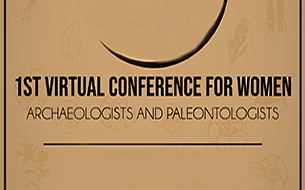Notice
The Hidram4000 project : land use, human occupation and lanscape changes in Spain / A. Curras
- document 1 document 2 document 3
- niveau 1 niveau 2 niveau 3
Descriptif
The Hidram4000 project : land use, human occupation and lanscape changes in Spain during the last 3000 years. The Somolinos lake record (1240 M A.S.L.) : Siera de Pela, Guadalajara Province. Andres CURRAS DOMINGUEZ. In "La construction des territoires montagnards : exploitation des ressources et mobilité des pratiques", 2e International Workshop on archaeology of european mountain landscape, organisé par les laboratoires GEODE, FRAMESPA, GEOLAB et Chrono-Environnement. Université Toulouse 2-Le Mirail, 8-11 octobre 2009. [seconde journée]
Since 2005, the HIDRAM4000 project aims to analyze human-environment past synergies in order to understand the effects of climate variability over environmental and socio-economic systems in central Spain during the Late Holocene. In addition, socio-environmental interactions have largely influenced land management choices and cultural landscape shaping especially in those processes related to grazing, farming and water management activities.
This project integrates archaeology, history and multi-proxy palaeoenvironmental analyses such as pollen, non-pollen palynomorphs (NPP), charcoal, ostracoda, diatoms, cladocera and sedimentology.
These analyses have been carried out at high resolution in lacustrine sediments of the Somolinos karstic lakes (1240 m a.s.l.). They are located in a mountain area in central Spain (Sierra de Pela, Guadalajara province) which is characterised by a sub-continental Mediterranean climate. Two cores were studied, one from the current active lake (SOM-a) covering from 1600 to 2005 AD, and a second one from a drained lake, covering from 900 BC to 700 AD (SOM-PAS).
From the 9th to the end of the 1st century BC, SOM-PAS shows a first environmental phase which is characterised by a forested landscape dominated by pines and evergreen oaks. Early signals of human management are witnessed at the 8th century BC, while diatoms indicate a freshwater permanent lake.
From the 6th to the 1st century BC, successive oscillations of Arboreal Pollen, together with the increase of macrocharcoal particles and metals, suggest the existence of human activities (grazing and metallurgy). For this period, archaeological evidences are reported in the basin highlands.
Woodland clearance in the area started at the 1st century BC. from this time onwards, pollen and NPP show the expansion of farming and grazing practices, while mining activities are also evidenced by geochemical data. Such deforestation process resulted in an open grazed landscape between the 2nd and the 5th century AD. The increase of diatom benthic species suggests a change in the water trophic state.
Whilst a change towards a regeneration of evergreen oak forests is evidenced in this open landscape during the5th century AD, pine woodland did not recover in the area, as documented in pre-clearing phases. This period is otherwise coincident with the decline of farming and grazing activities, while mining expanded during the 6th and the 7th centuries. The lake was desiccated by a drain cutting across the travertine dam, most probably during the Early Medieval period.
From the 14th century onwards, the region was largely grazed due to the development of the Spanish pastoral transhumance. This activity resulted in a large number of pastoral structures, some of them radiocarbon dated at the end of 15th century. Unfortunately, this period is not covered by the Somolinos lake cores.
SOM-a records farming and industrial activies in the region for the last 400 years. During modern times, the lake was employed as an energetic resource. In this respect, cereal and fulling mills are documented at least from the 16th century, and 17 cereal mills and 8 waterfall copper forges were already working in 1752. Despite these pre-industrial facilities, the area was progressively depressed and depopulated during the 19th century due to the end of the transhumance after the Mesta abolition (1836) and the propriety privatisation (1855).
From 1600 to 1675 AD, farming activities (cereal and chestnut cultures are also reported in written sources at 1584. The abundance of planktonic diatoms suggests a deep water column.
From 1675 to 1730 AD, farming activities decline, while cereals, chestnuts and vineyard crops remain. Geochemistry analysis records metal peaks (Co, Cu, Zn, Mn), suggesting mining and possible metallurgy. During this period, the organic matter content, the dolomite high percentages and the decrease of calcite suggest a drop in the lake water level.
From 1730 to 1910 AD, the pollen record shows a new decrease in farming activities, resulting in a reforestation of the area which is consistent with the documented demographic decline. Residual metallurgical activities are otherwise recorded by peaks of Zn at 1780 and Cu at 1900 AD, which agree with 18th century writing sources. The water level slightly increases, as shown by the progressive decline of quartz. Between 1730 and 1810, biotic remains either decrease or are absent, suggesting low lake productivity which is probably linked to a cold period of the LIA. The occurrence of damaged frustules and the abundance of benthic diatoms suggest a turbulent sedimentary environment. In 1910, an electric power station was installed in a former mill.
From 1910 to the present, oak forest and riparian trees expand. The presence of vine, cereal and walnut croppings indicate a new farming expansion. The increase of benthic diatoms suggests lake eutrophication while grain size and calcite content indicate a progressive fall in the water level. Geochemistry data record a peak of Pb, Cu, Zn, Cr at 1940, which is previous to the present-day industrial development. of that gradual deforestation is slopes destabilization which makes them more senstive to climate-driven erosive phenomena.
Intervention / Responsable scientifique
Dans la même collection
-
L'agro-pastoralisme en milieu montagnard : l'apport des sépultures saisonnières / Patrice Courtaud
CourtaudPatriceL'agro-pastoralisme en milieu montagnard : l'apport des sépultures saisonnières. Patrice COURTAUD. In "La construction des territoires montagnards : exploitation des ressources et mobilité des
-
La construction des territoires montagnards : exploitation des ressources et mobilité des pratiques…
GalopDidierThe occupation and the exploitation of mountain environments, both during conquest and maximum demographic phases, or on the contrary, during desertification phases, differ in geographical
-
Human environmental interactions in high altitude zone between Neolithic and roman period / K. Walsh
WalshKevinA History of Transitions : human environmental interactions in the high altitude zone between Neolithic and roman period. Kevin WALSH. In "La construction des territoires montagnards : exploitation
-
L'évolution végétale holocène sur le versant sud des Pyrénées occidentales / Maria-José Iriarte
IriarteMaría JoséL'évolution végétale holocène sur le versant sud des Pyrénées occidentales. Maria José IRIARTE. In "La construction des territoires montagnards : exploitation des ressources et mobilité des pratiques"
-
Prehistory of the Southern Appalachian uplands of Tennessee / Jay Franklin
FranklinJay D.Prehistory of the Southern Appalachian uplands of Tennessee. Jay FRANKLIN. In "La construction des territoires montagnards : exploitation des ressources et mobilité des pratiques", 2e International
-
A cultural landscape research in a mediterranean mountain (Barcelona-Girona) / A. Garcia Molsosa
Garcia MolsosaArnauA cultural landscape research in a mediterranean mountain area : the "Massis del Montseny project" (Barcelona-Girona) / A. GARCIA MOLSOSA. In "La construction des territoires montagnards :
-
Mountain anthropization in Alps : a multidisciplinary look in the Pygmalion program / F. Arnaud
ArnaudFabienMountain anthropization in Alps : a multidisciplinary look in the framework of Pygmalion research program. Fabien ARNAUD. In "La construction des territoires montagnards : exploitation des ressources
-
Exploitation of natural vegetal resources in chalcolithic areni-1 cave (Armenia) / R. Hovsepyan
HovsepyanRomanExploitation of natural vegetal resources in chalcolithic areni-1 cave settlement (Armenia). Roman HOVSEPYAN ovsepyan, Roman. In "La construction des territoires montagnards : exploitation des
-
Wildfires in european alps : frequent yesterday, rare today, frequent tomorrow ? / W. Finsinger
FinsingerWalterWildfires in european alps : frequent yesterday, rare today, frequent tomorrow ?. Walter Finsinger. In "La construction des territoires montagnards : exploitation des ressources et mobilité des
-
Territorial practices, landscape dynamics and mobilities in a french mountain / P. Allée, Y. MIras
AlléePhilippeMirasYannickTerritorial practices, landscape dynamics and spatio-temporal mobilities in a french medium mountain : integrated approach combining archaeological and paleoecological inverstigations performed in the
-
Exploitation des vallées andorranes depuis le Néolithique/ J.-M. Palet Martinez, H. Orengo Romeu
Palet i MartínezJosep M.Orengo RomeuHèctor A.L'exploitation des ressources des vallées andorranes du Madriu-Perafita-Claror et de la chaîne du Cadi (Pyrénées orientales) depuis le Néolithique à partir des données archéologiques et
-
Exemple de l'occupation de l'espace dans la montagne corse au bas Moyen Age: peuplement et économie…
TomasÉmilieExemple de l'occupation de l'espace dans la montagne corse au bas Moyen Age: peuplement et économie dans la Pieve de Rostino. Émilie TOMAS. In "La construction des territoires montagnards :
Sur le même thème
-
GLAMCE - Dater les paysages glaciaires du Forez : combinaison d’une technique low-tech (Marteau de …
RousselErwanAncrenazArthurArthur Ancrenaz et Erwan Roussel, membres de GEOLAB, présentent le projet GLAMCE.
-
Approvisionner le feu en bois. Regard anthracologique sur l’exploitation du Bois des Lens et les us…
VaschaldeChristopheChardonneau-HenneuseJulienApprovisionner le feu en bois. Regard anthracologique sur l’exploitation du Bois des Lens et les usages du combustible par les potiers de l’Antiquité tardive.
-
Véganes ou cannibales : le casse-tête des alimentations néandertaliennes
JaouenKlerviaDepuis quelques années, les analyses isotopiques nouvellement mises au point ont permis d'explorer en profondeur l'alimentation néandertalienne, révélant des informations précieuses sur leur régime
-
La recherche en milieu polaire (Dôme C, Antarctique)
VauglinIsabelleLa base scientifique de Concordia, en Antarctique, accueille toute l'année des chercheurs et des chercheuses qui viennent braver les conditions extrêmes du pôle Sud pour scruter l'Univers. Le
-
3 - Introduction aux isotopes - La charte isotopique et les isotopes du paléoclimatologue
Nguyen TuThanh ThuyPanorama des isotopes - Focus sur les isotopes d’intérêt
-
ECOCLIM2021: 01 - Introduction - Les tempos des variations climatiques passées de la Terre
PaillardDidierCours délivré dans le cadre de l'école ECOCLIM2021, par Didier Paillard (LSCE).
-
Le cycle du carbone perturbé par les émissions anthropiques
BoppLaurentUne présentation consacrée aux effets de l'action anthropique sur le cycle du carbone depuis le milieu du XXe siècle et les conséquences qui en découlent sur le climat.
-
Alfredo Mayoral - « Gergovie : nouvelles recherches géoarchéologiques et paléoenvironnementales »
Le jeudi 16 septembre 2021, à 20h30, sur Facebook, Page Musée de Gergovie, Alfredo Mayoral, géoarchéologue, à l'Institut Catalan d’Archéologie Classique et à GEOLAB (UMR 6042 CNRS / UCA UNILIM), a
-
O. PEYRON et al., Incidence des référentiels polliniques sur la quantification des paléoclimats.
Incidence des référentiels polliniques sur la quantification des paléoclimat. Application au climat de la Mongolie au cours de l'Holocène.
-
M. DJAMALI et M. MASHKOUR, Réflexions sur la contribution des coprolithes de hyènes modernes comme …
Réflexions sur la contribution des coprolithes de hyènes modernes comme référentiel pour les reconstitutions paléoenvironnementales. Morteza DJAMALI1, Marjan MASHKOUR2 1-CNRS, IMBE (morteza
-
"Ouranopithecus macedoniensis" (late Miocene, Greece): analysis of mandibular fragments using …
IoannidouMelaniaOuranopithecus macedoniensis (late Miocene, Greece): analysis of mandibular fragments using 3D geometric morphometrics / Melania Ioannidou, in colloque "1st Virtual Conference for Women
-
What is shaping the brain? A perspective on brain size evolution in carnivorans / Margot…
MichaudMargotWhat is shaping the brain? A perspective on brain size evolution in carnivorans / Margot Michaud, in colloque "1st Virtual Conference for Women Archaeologists and Paleontologists. Nouveaux

